Server Allocator For WHMCS
(→About Server Allocator For WHMCS) |
|||
| Line 50: | Line 50: | ||
|} | |} | ||
{| | {| | ||
| − | |style="padding: 0px 0px 0px 30px;"|✔ Supports PHP 5. | + | |style="padding: 0px 0px 0px 30px;"|✔ Supports PHP 5.4 Up To PHP 7 |
|} | |} | ||
{| | {| | ||
| Line 62: | Line 62: | ||
|} | |} | ||
{| | {| | ||
| − | |style="padding: 20px 0px 20px 15px;"|'''1. Log in to your client area and download | + | |style="padding: 20px 0px 20px 15px;"|'''1. Log in to your client area and download the module.''' |
|} | |} | ||
{| | {| | ||
| Line 68: | Line 68: | ||
|} | |} | ||
{| | {| | ||
| − | |style="padding: 0px 0px | + | |style="padding: 0px 0px 10px 15px;"|'''2. In the downloaded file you will find two packages that support different PHP versions.'''<br/>As presented on the screen below, the first one is dedicated to PHP 7, while the second one is aimed at PHP 5.4 up to PHP 5.6.<br/>It does not apply to open source versions.<br/> |
| − | + | '' '''Note''': You can check current PHP version in your WHMCS. To do so proceed to ''' 'Utilities' → 'System' → 'PHP Info'.''' | |
|} | |} | ||
{| | {| | ||
| Line 75: | Line 75: | ||
|} | |} | ||
{| | {| | ||
| − | |style="padding: 0px 0px 15px 15px;"|'''3. When you install Server Allocator for the first time you have to rename '' 'license_RENAME.php' '' file.'''<br/> | + | |style="padding: 0px 0px 15px 15px;"|'''3. Extract the downloaded file and choose the one with the right PHP version. Upload and extract the PHP file into the main WHMCS directory.'''<br /> |
| + | The content of PHP version files should look like this. | ||
| + | |} | ||
| + | {| | ||
| + | |style="padding: 0px 0px 20px 25px;"|[[File:sdfdf.png]] | ||
| + | |} | ||
| + | {| | ||
| + | |style="padding: 0px 0px 15px 15px;"|'''4. When you install Server Allocator For WHMCS for the first time you have to rename '' 'license_RENAME.php' '' file.'''<br/> | ||
File is located in '' 'modules/addons/serverswitcher/license_RENAME.php'.'' Rename it from '' 'license_RENAME.php' '' to '' 'license.php'.'' | File is located in '' 'modules/addons/serverswitcher/license_RENAME.php'.'' Rename it from '' 'license_RENAME.php' '' to '' 'license.php'.'' | ||
|} | |} | ||
| Line 82: | Line 89: | ||
|} | |} | ||
{| | {| | ||
| − | |style="padding: 0px 0px 15px 15px;"|''' | + | |style="padding: 0px 0px 15px 15px;"|'''5. In order to configure your license key, you have to edit a previously renamed '' 'license.php' '' file.'''<br/> |
Enter your license key between quotation marks as presented on the following screen. You can find your license key at your client area'' → 'My Products'.'' | Enter your license key between quotation marks as presented on the following screen. You can find your license key at your client area'' → 'My Products'.'' | ||
|} | |} | ||
| Line 89: | Line 96: | ||
|} | |} | ||
{| | {| | ||
| − | |style="padding: 0px 0px 15px 15px;"|''' | + | |style="padding: 0px 0px 15px 15px;"|'''6. Now you have to activate the module in your WHMCS system.'''<br/> |
Log in to your WHMCS admin area. Go to the '' 'Setup' '' → '' 'Addon Modules' ''. Afterwards, find '' 'Server Allocator' '' and press '' 'Activate' '' button. | Log in to your WHMCS admin area. Go to the '' 'Setup' '' → '' 'Addon Modules' ''. Afterwards, find '' 'Server Allocator' '' and press '' 'Activate' '' button. | ||
|} | |} | ||
| Line 96: | Line 103: | ||
|} | |} | ||
{| | {| | ||
| − | |style="padding: 0px 0px 15px 15px;"|''' | + | |style="padding: 0px 0px 15px 15px;"|'''7. In the next step you need to permit access to this module.'''<br /> |
To do so click on '' 'Configure' '' button, tick '' 'Access Control' '' near desired admin role groups and press '' 'Save Changes'.'' | To do so click on '' 'Configure' '' button, tick '' 'Access Control' '' near desired admin role groups and press '' 'Save Changes'.'' | ||
|} | |} | ||
| Line 103: | Line 110: | ||
|} | |} | ||
{| | {| | ||
| − | |style="padding: 0px 0px 30px 15px;"|''' | + | |style="padding: 0px 0px 30px 15px;"|'''8. You have just successfully installed Server Allocator For WHMCS!''' |
|} | |} | ||
Revision as of 08:12, 26 May 2017
Contents |
About Server Allocator For WHMCS
| Server Allocator For WHMCS will allow to automatically switch servers when placing an order depending on previously set rules. Module lets you create and configure your own switch rules, split them into groups and assign to them specified servers and product groups. |
- Admin Area Features:
| ✔ Add/Edit/Remove Switching Rules |
| ✔ Add Multiple Conditions/Products/Servers To Switching Rule |
| ✔ Assign Multiple Rules To Rules Group |
| ✔ Set Default Servers To Rules Group - Used If No Rule Is Applied |
| ✔ Access Links To Order Form Of Products Configured According To Specified Rule |
- Client Area Features:
| ✔ Switch Assigned Server Automatically During Ordering Product - Depending On Applied Rule |
- Supported Rule Definitions:
| ✔ Configurable Options |
| ✔ Custom Fields |
| ✔ Product Addons |
- General Info:
| ✔ Supports All Server Types |
| ✔ Supports Most Provisioning Modules |
| ✔ Multi-Language Support |
| ✔ Supports PHP 5.4 Up To PHP 7 |
| ✔ Supports WHMCS V6 and V7 |
Installation and Configuration
| This tutorial will show you how to successfully install and configure Server Allocator For WHMCS. We will guide you step by step through the whole installation and configuration process. |
| 1. Log in to your client area and download the module. |
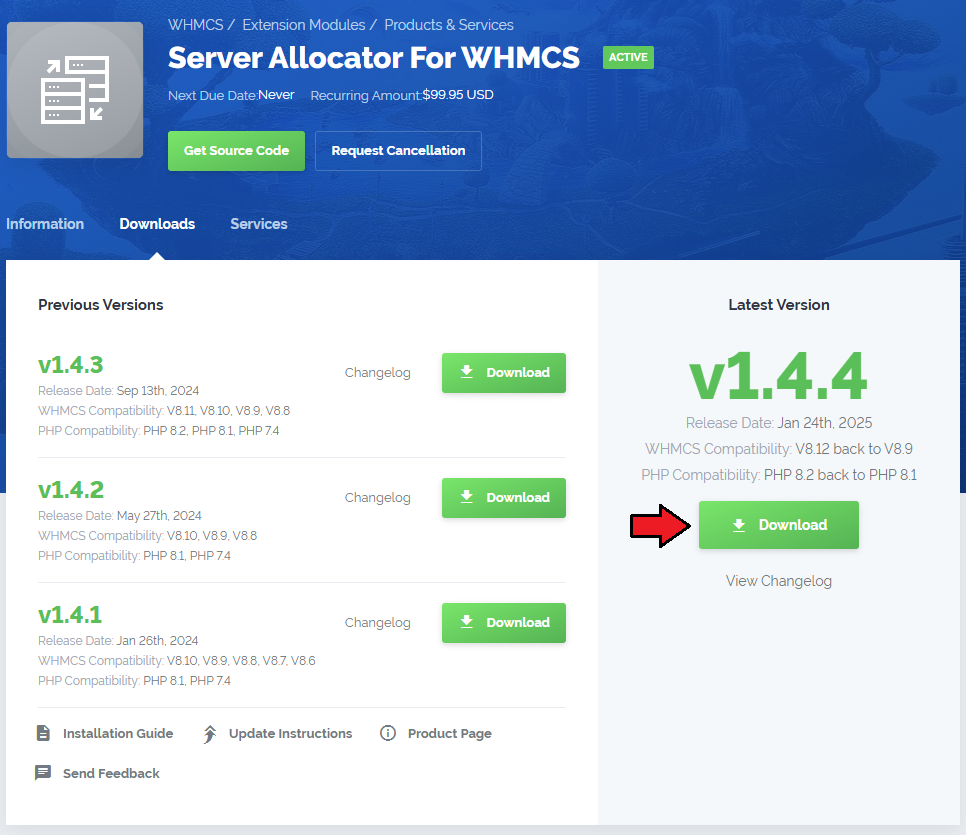
|
| 2. In the downloaded file you will find two packages that support different PHP versions. As presented on the screen below, the first one is dedicated to PHP 7, while the second one is aimed at PHP 5.4 up to PHP 5.6. It does not apply to open source versions. Note: You can check current PHP version in your WHMCS. To do so proceed to 'Utilities' → 'System' → 'PHP Info'. |

|
| 3. Extract the downloaded file and choose the one with the right PHP version. Upload and extract the PHP file into the main WHMCS directory. The content of PHP version files should look like this. |
| 4. When you install Server Allocator For WHMCS for the first time you have to rename 'license_RENAME.php' file. File is located in 'modules/addons/serverswitcher/license_RENAME.php'. Rename it from 'license_RENAME.php' to 'license.php'. |
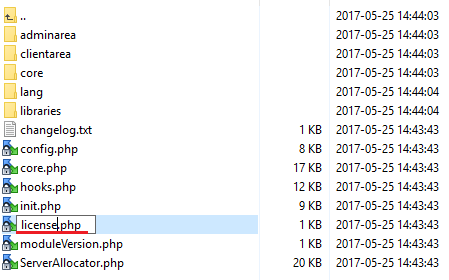
|
| 5. In order to configure your license key, you have to edit a previously renamed 'license.php' file. Enter your license key between quotation marks as presented on the following screen. You can find your license key at your client area → 'My Products'. |

|
| 6. Now you have to activate the module in your WHMCS system. Log in to your WHMCS admin area. Go to the 'Setup' → 'Addon Modules' . Afterwards, find 'Server Allocator' and press 'Activate' button. |
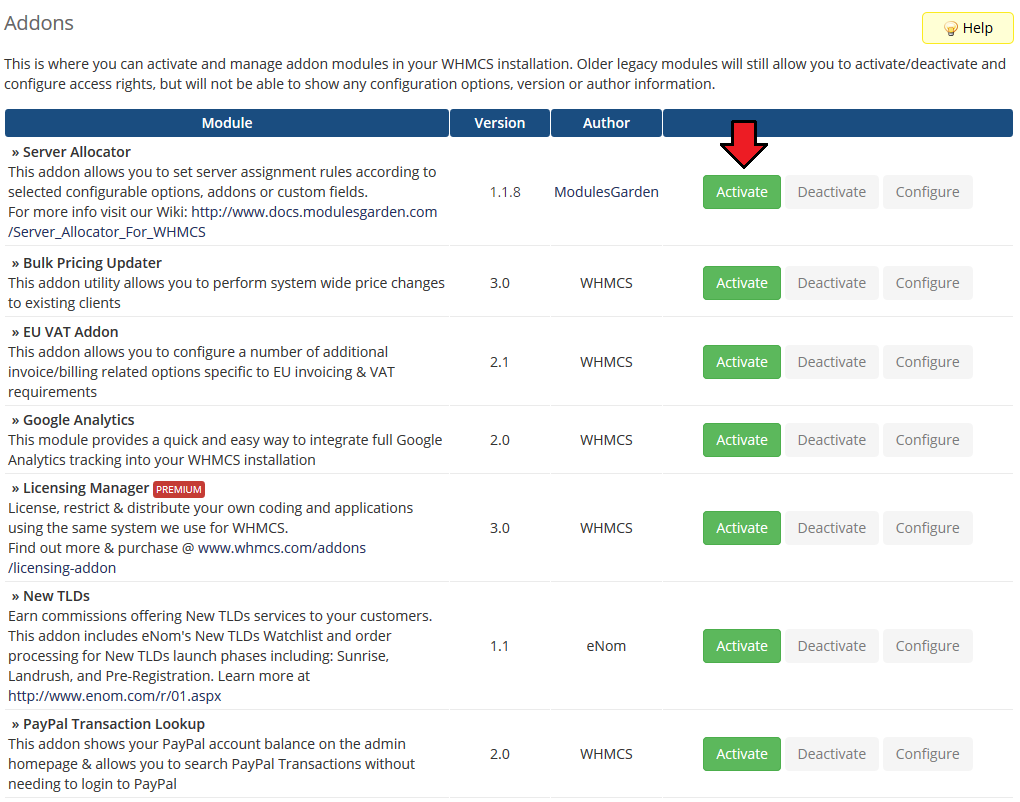
|
| 7. In the next step you need to permit access to this module. To do so click on 'Configure' button, tick 'Access Control' near desired admin role groups and press 'Save Changes'. |
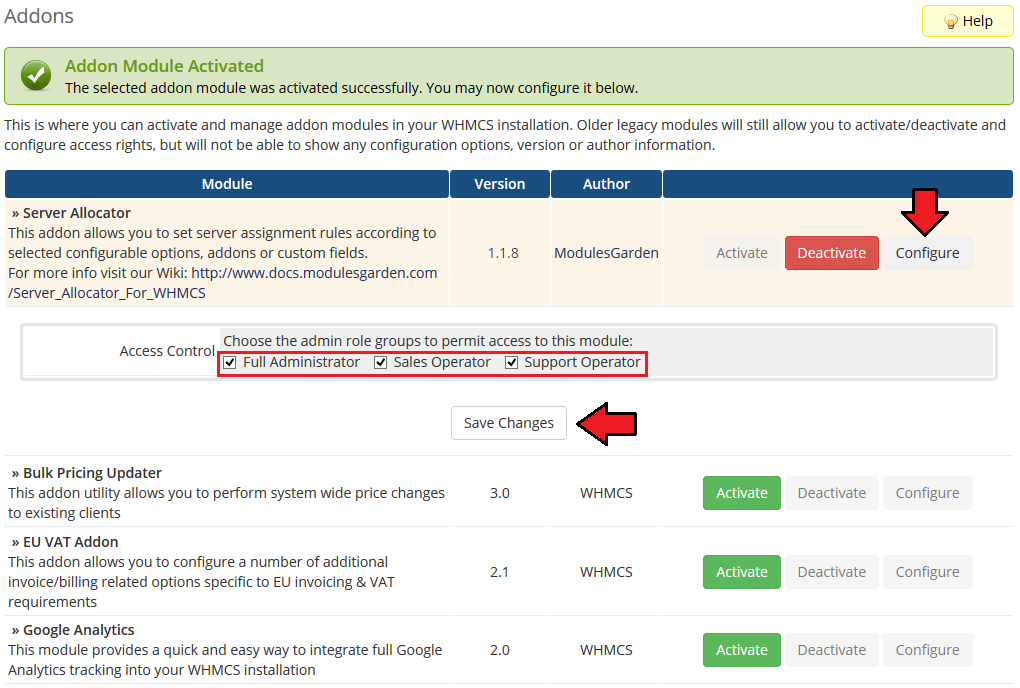
|
| 8. You have just successfully installed Server Allocator For WHMCS! |
Management
| Server Allocator For WHMCS allows you to automatically switch to wanted server upon specific product configuration. |
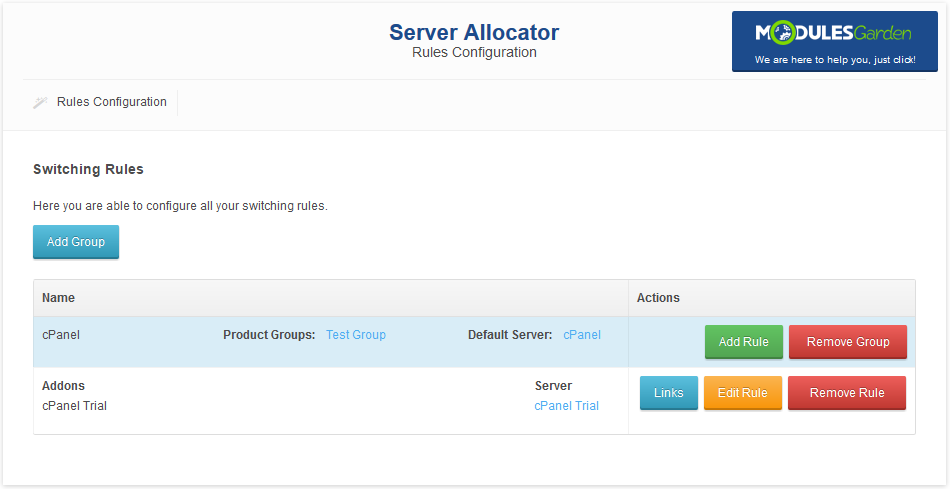
|
Add Group
| In order to configure switching rules, proceed with creating of a new group. Press 'Add Group' to proceed. |
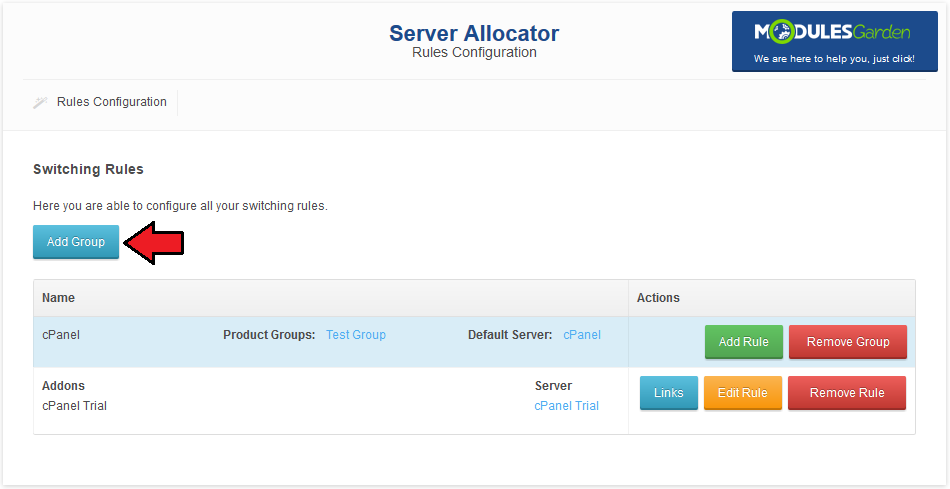
|
| Fill in group name and select desired product groups. Additionally, select default servers (Ctrl+mouse click for multi select) if you wish to redefine default servers. |
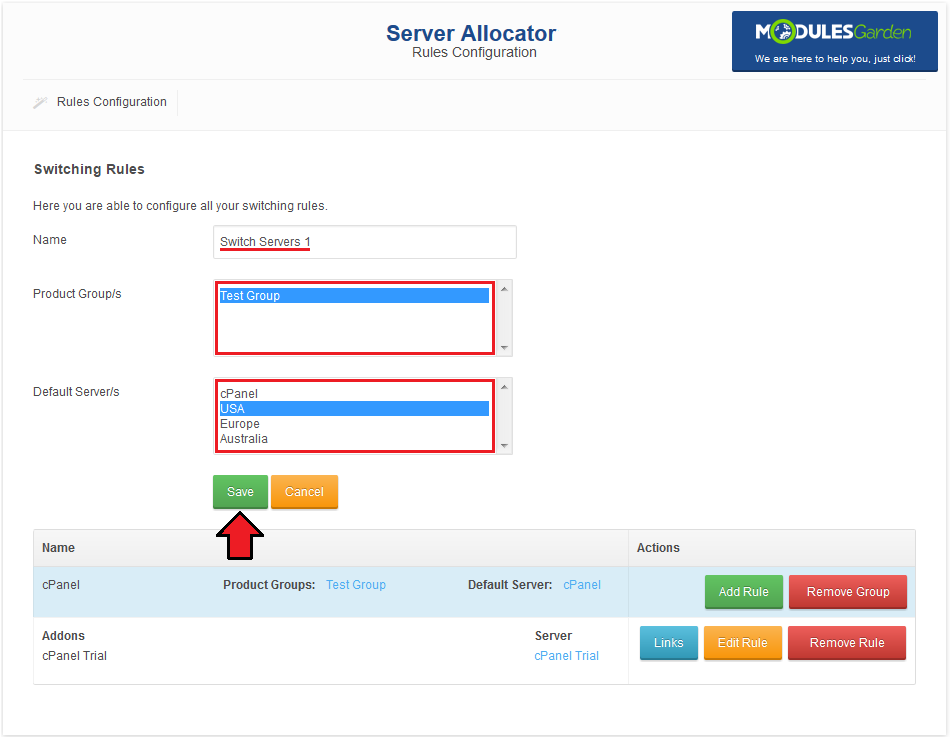
|
Group Management
| Previously created group currently does not affect the system at all. Let's change that through adding a new rule. Press 'Add Rule' to proceed. |
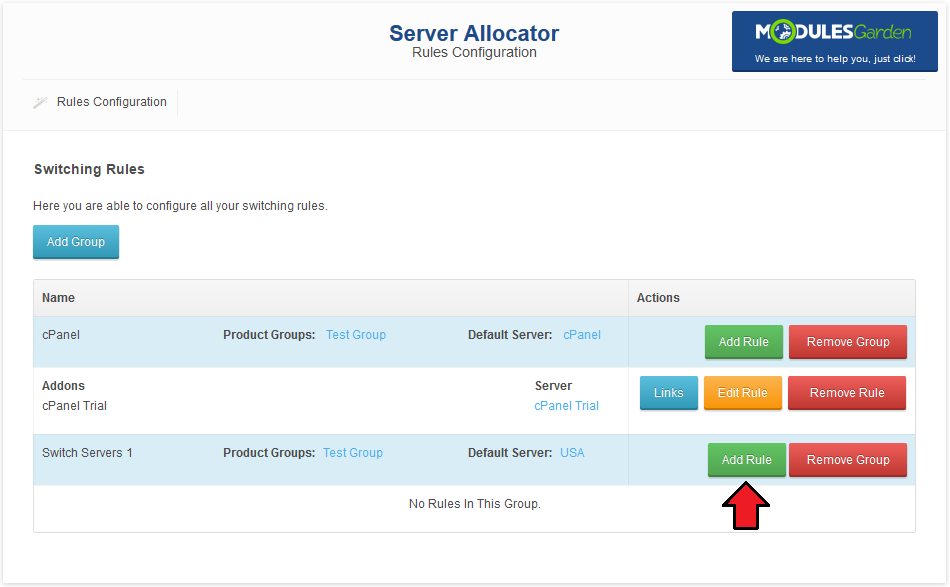
|
| In the next step select server type that the switch will apply to. Press 'Next'. |
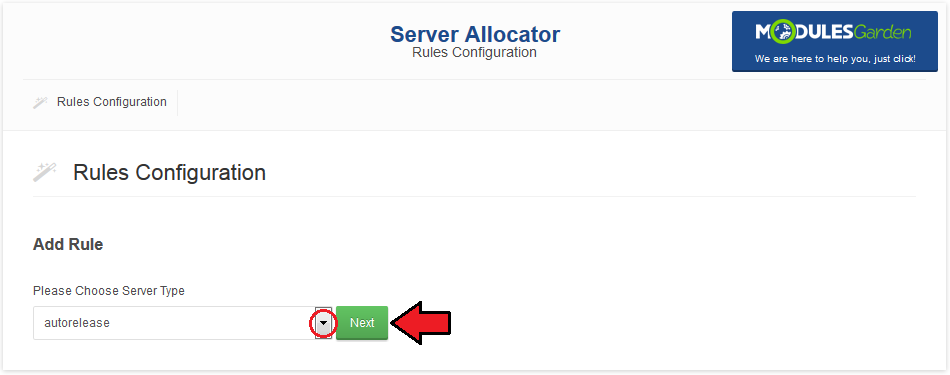
|
| Each rule can have multiple rule definitions. Important: Switch will be made only if all of the rule definitions are met. |
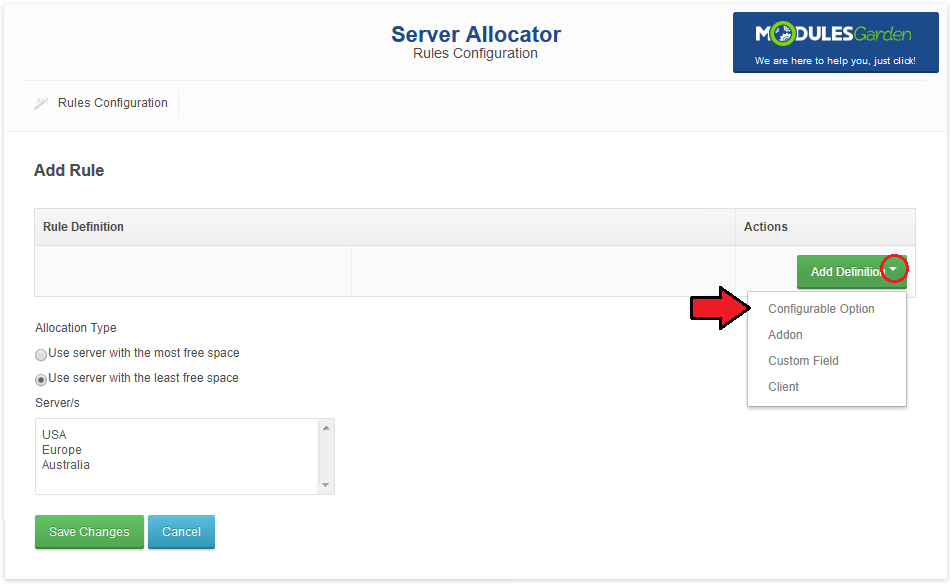
|
| For the purpose of this documentation, we have chosen configurable option rule definition. Now, we have to select specific configurable option and its value which needs to be chosen. |
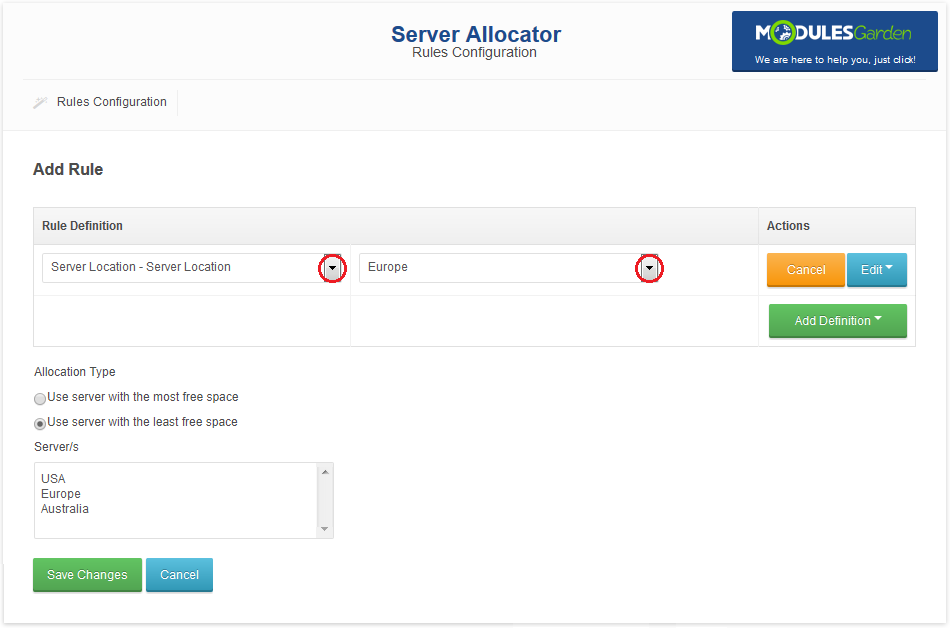
|
| Let's add one more rule definition, which in this case will be using product addon. Press 'Add Definition' → 'Addon' and choose product addon. |
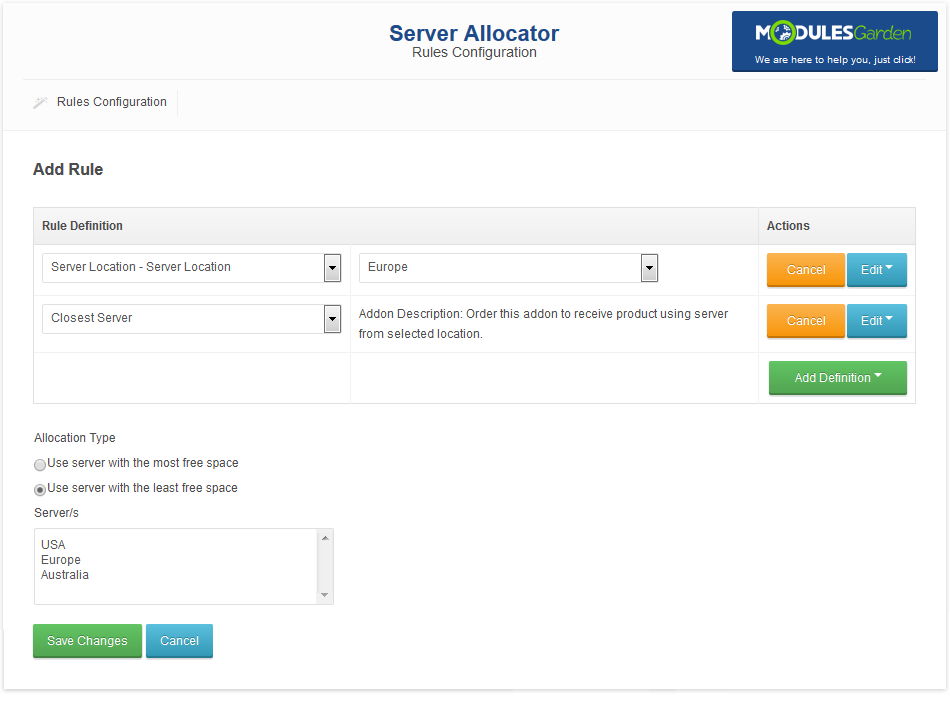
|
| Now, select server you wish to switch to and press 'Save Changes' button. |
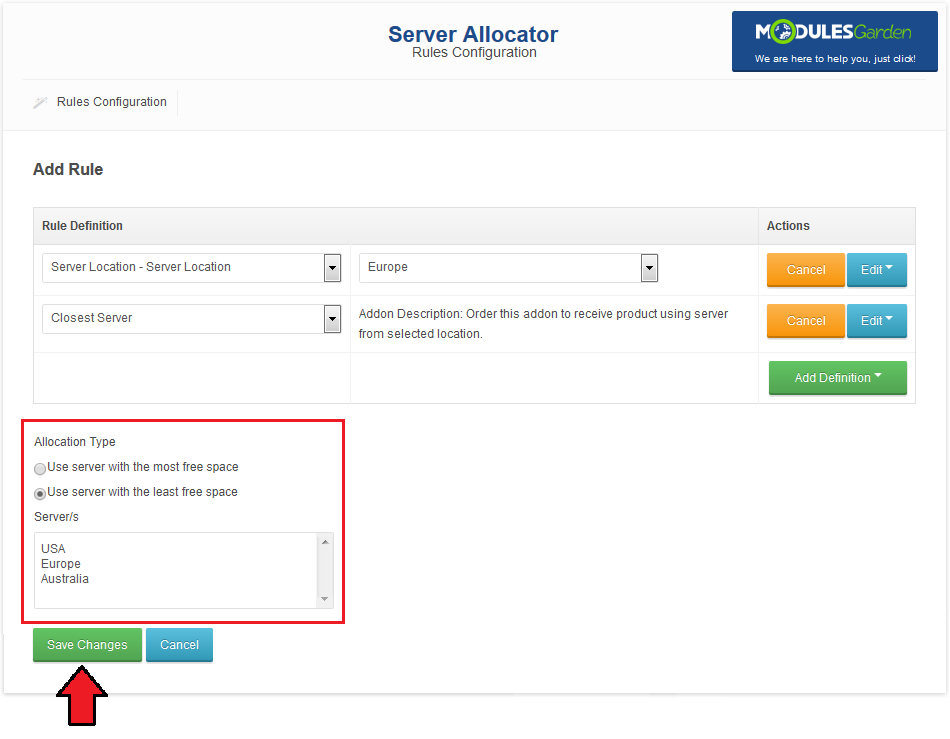
|
Rule Management
| Each group and rule can be modified and removed at any time through using buttons marked on the following screen. |
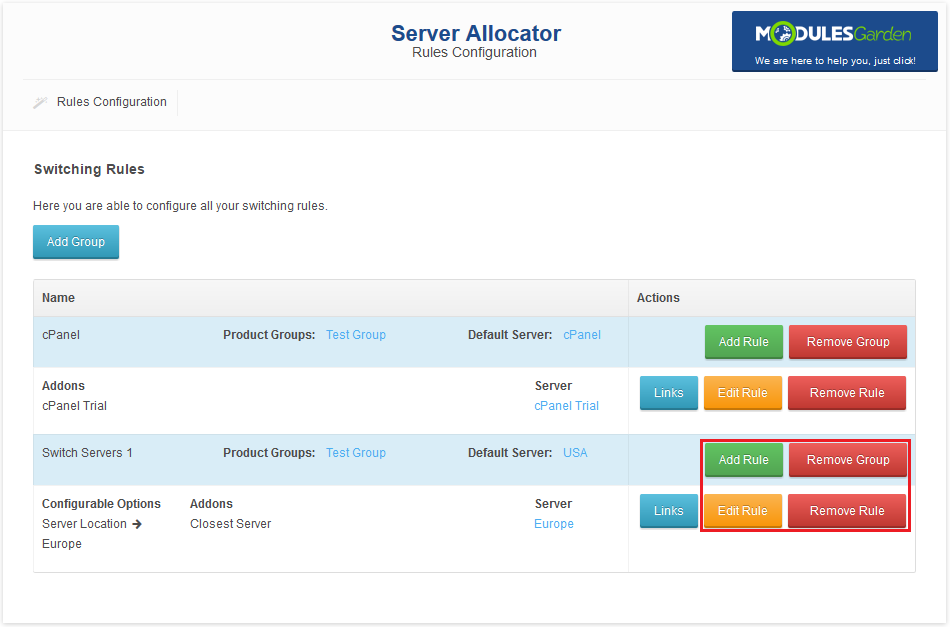
|
| Press 'Links' next to desired rule to view the list of links. |
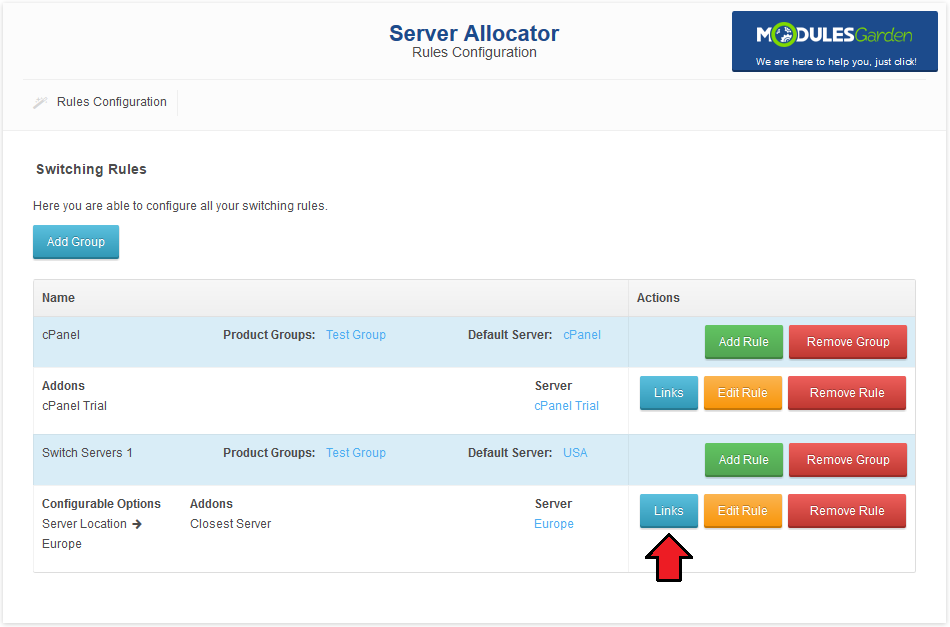
|
| Each of them leads to the order form with product configured according to defined rule. |
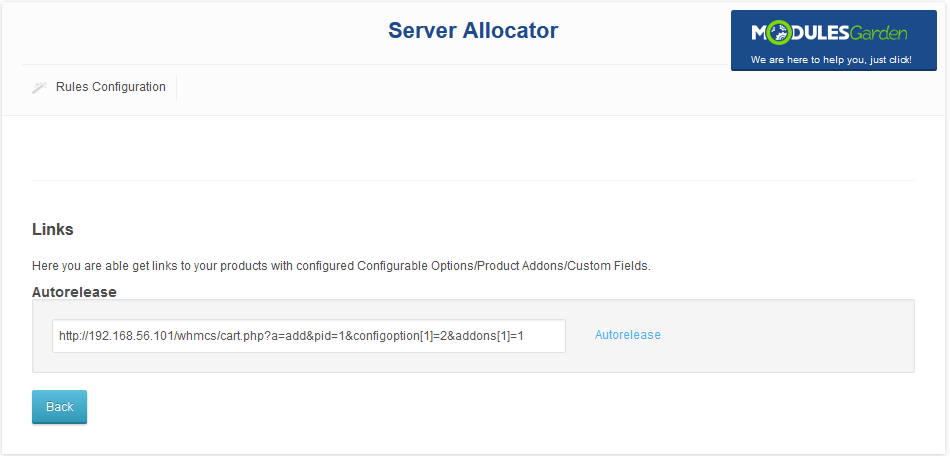
|
Sample Orders
| In this section we will show you how our module works on an exemplary rule shown below. |
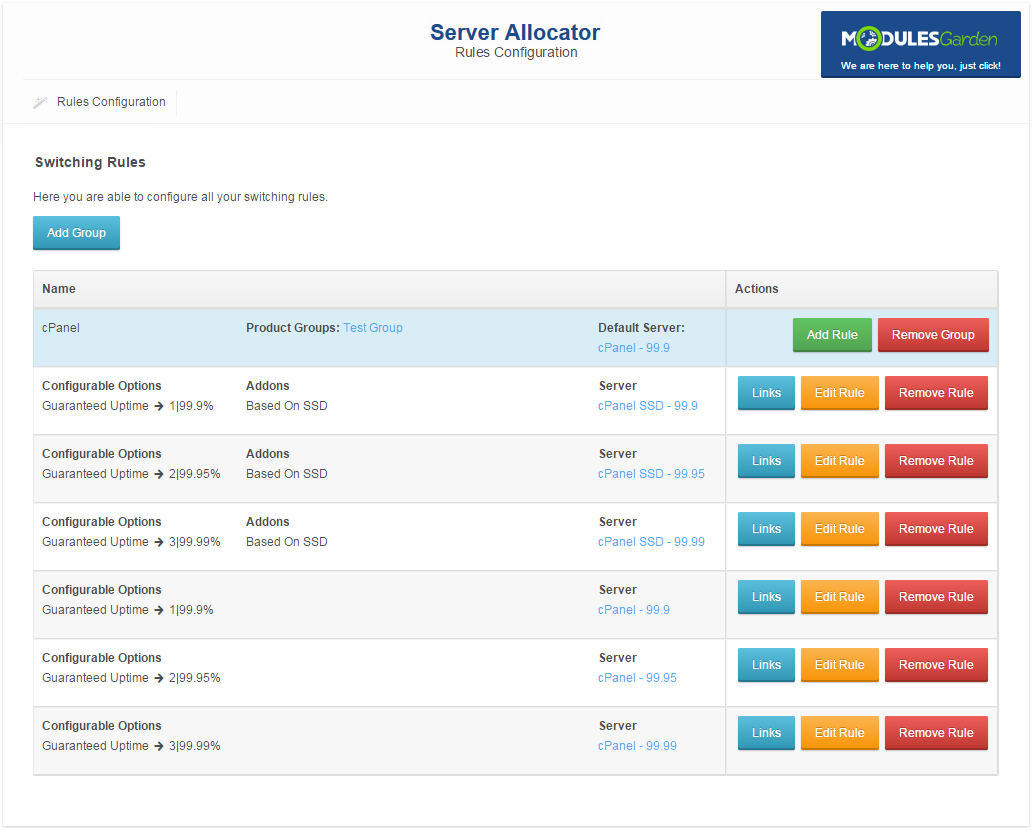
|
First Order
| Let us order a product fulfilling all conditions for receiving 'cPanel SSD - 99.9' server. Using this configuration, client pays additionally for 'Based On SSD' addon. |
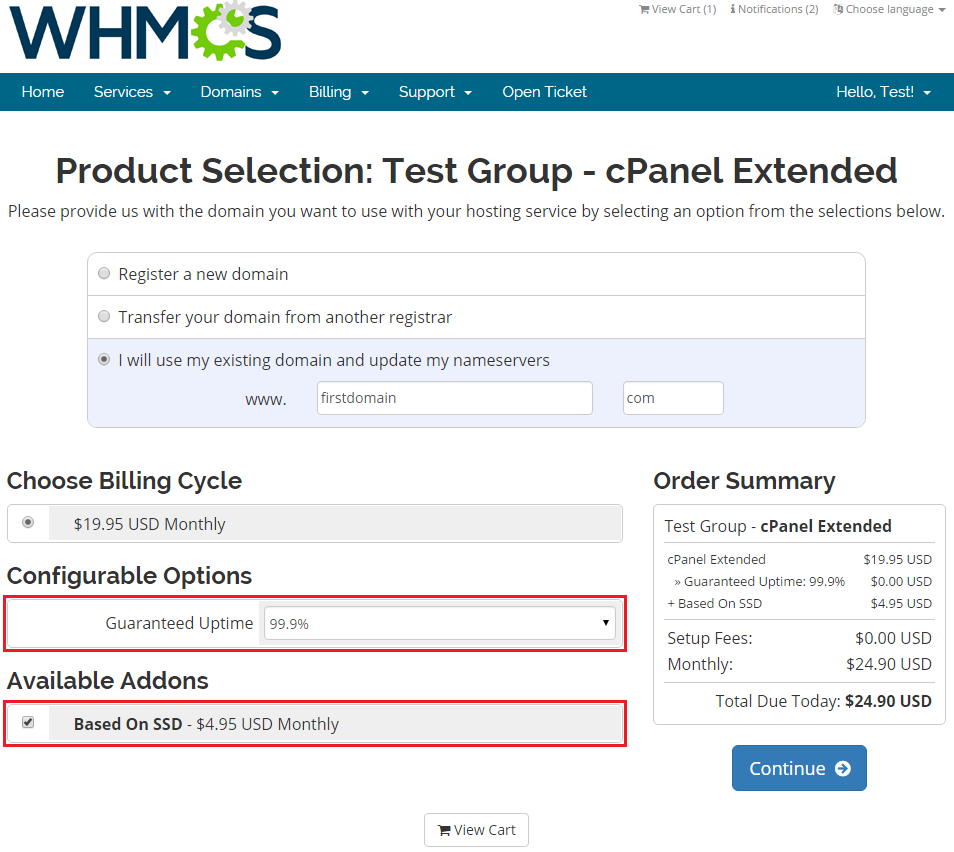
|
| The switch will be made upon ordering the product (order made from the client area) or accepting the order (order made from the admin area). Hosting with a switched server is displayed on the following screen. |
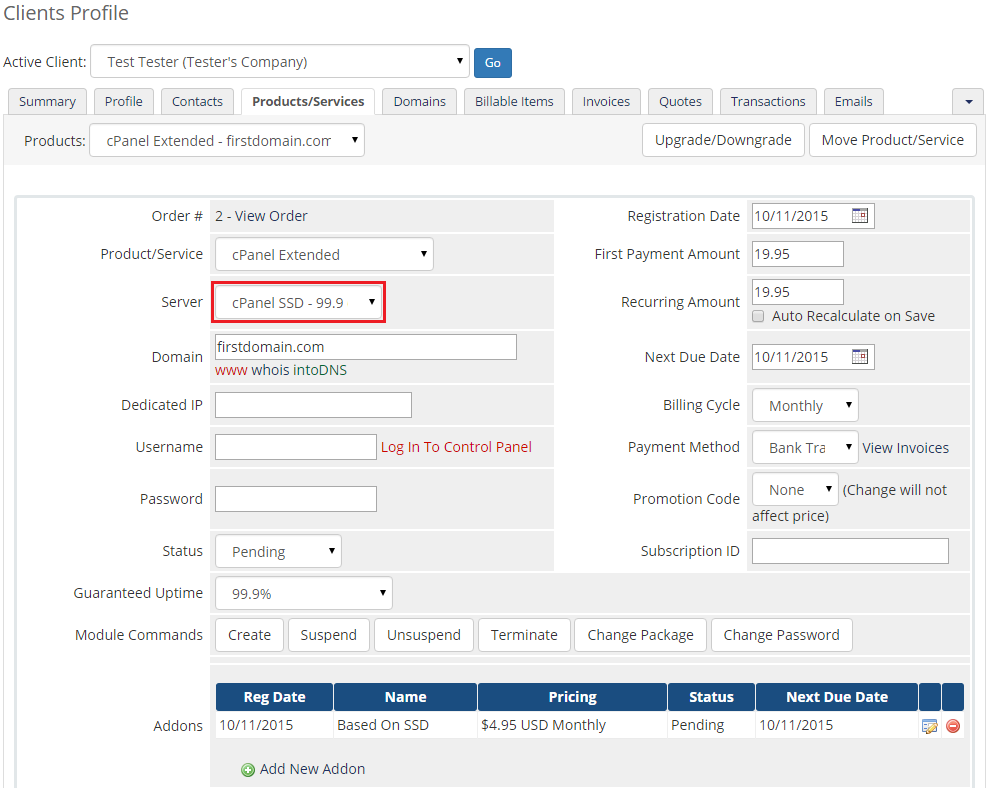
|
Second Order
| Let us order a product fulfilling all conditions for receiving 'cPanel SSD - 99.99' server. Client must pay for 'Based On SSD' as well as for higher guaranteed uptime. |
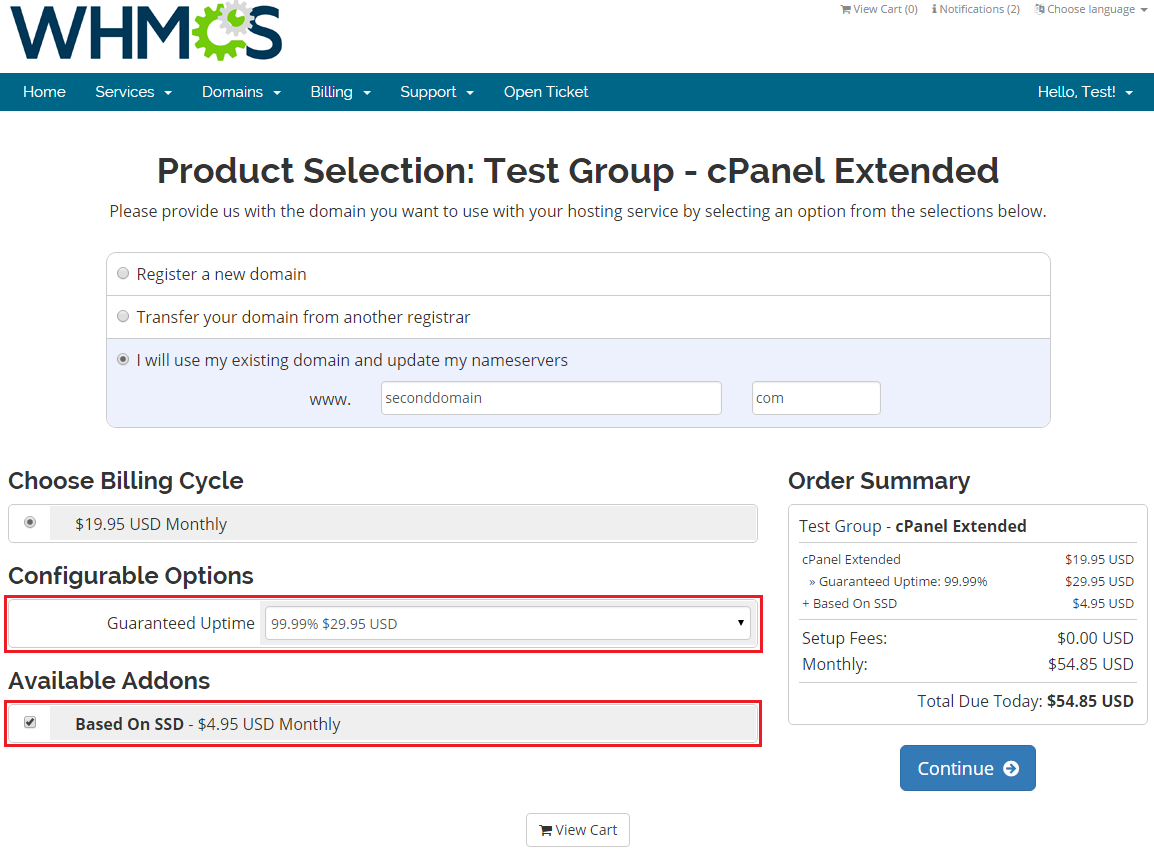
|
| As displayed on the following screen, the switch has been made successfully. |
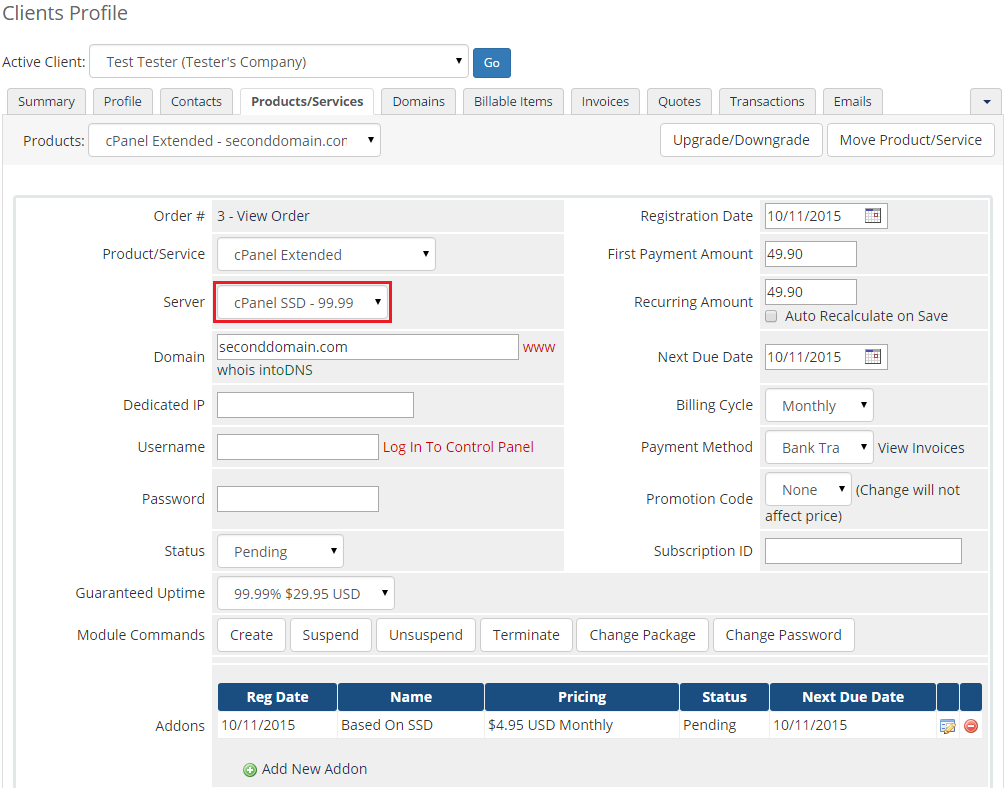
|
Third Order
| Let us order a product without 'Based On SSD' addon and with default uptime. This should result in assigning default 'cPanel - 99.9' server. |
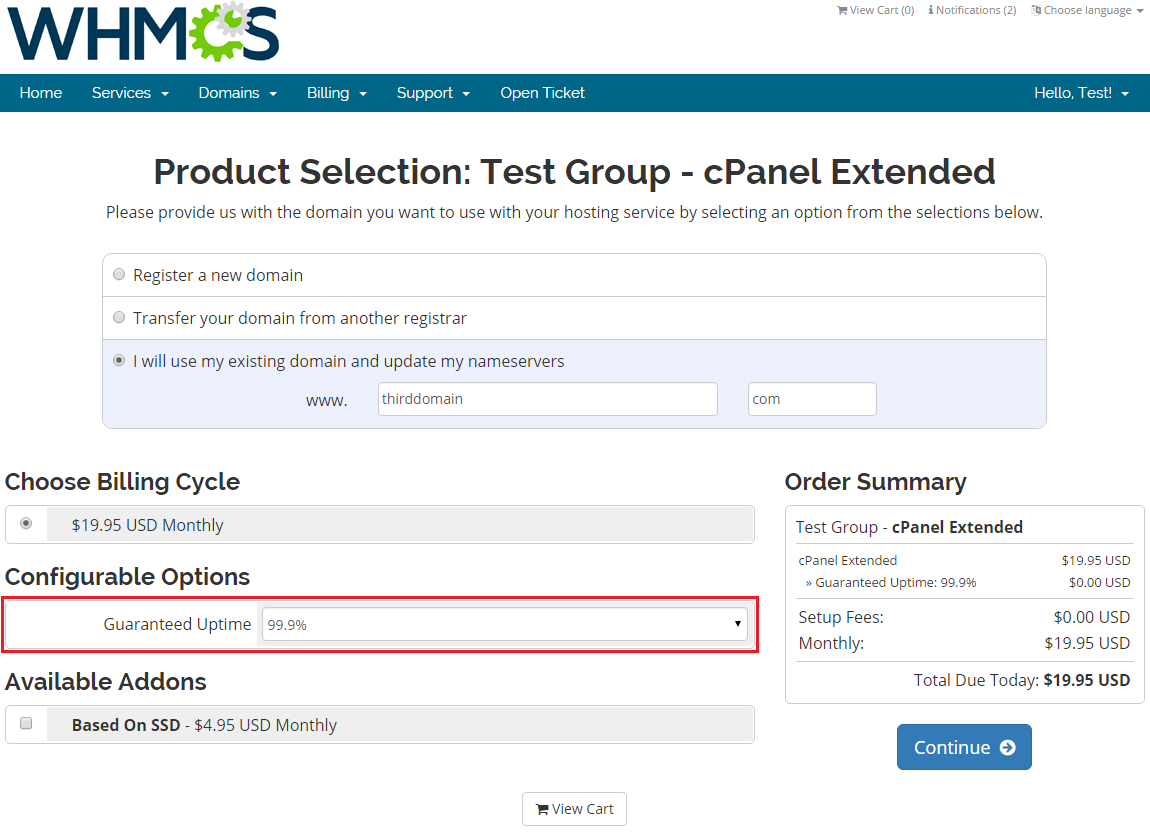
|
| As you can see, switch has not been made and hosting is using default group server. |
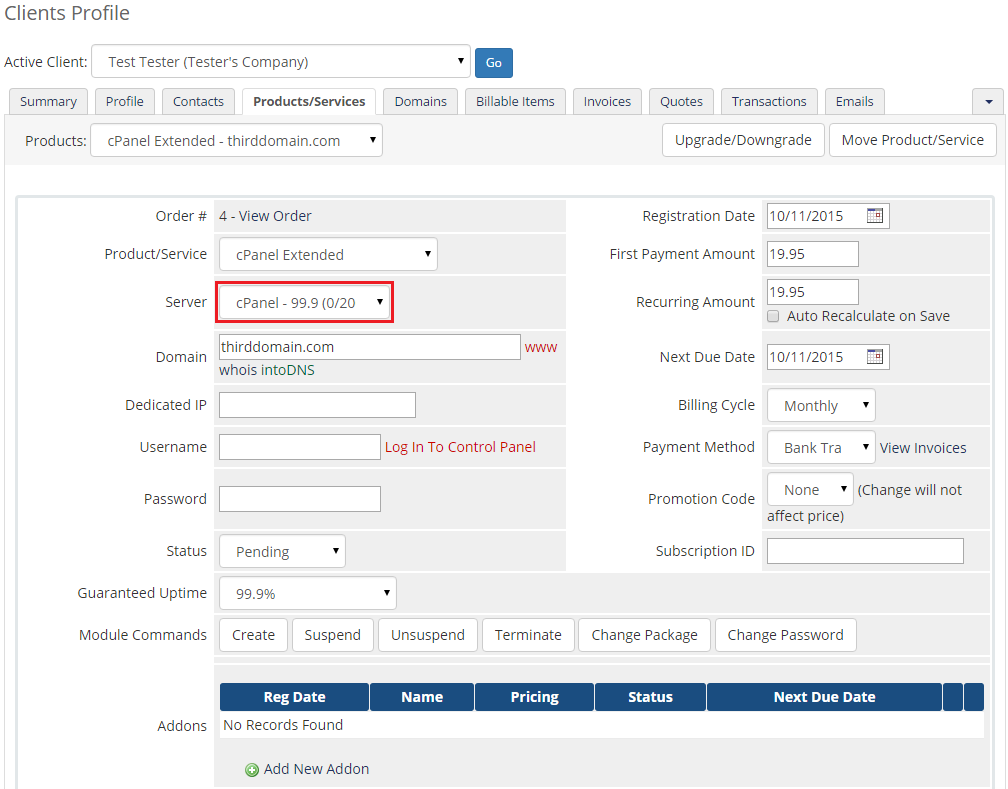
|
Tips
| 1. In case none of the configuration settings meet any rule, the product will be assigned to a default server. |
Common Problems
| 1. When you have problems with connection, check whether your SELinux or firewall does not block ports. |
| 2. You are unable to add a product addon/configurable option/custom field to the rule. Reason: An item has to be assigned to a product which:
Solution: Ensure that an item you are trying to add is assigned to a correct product. |